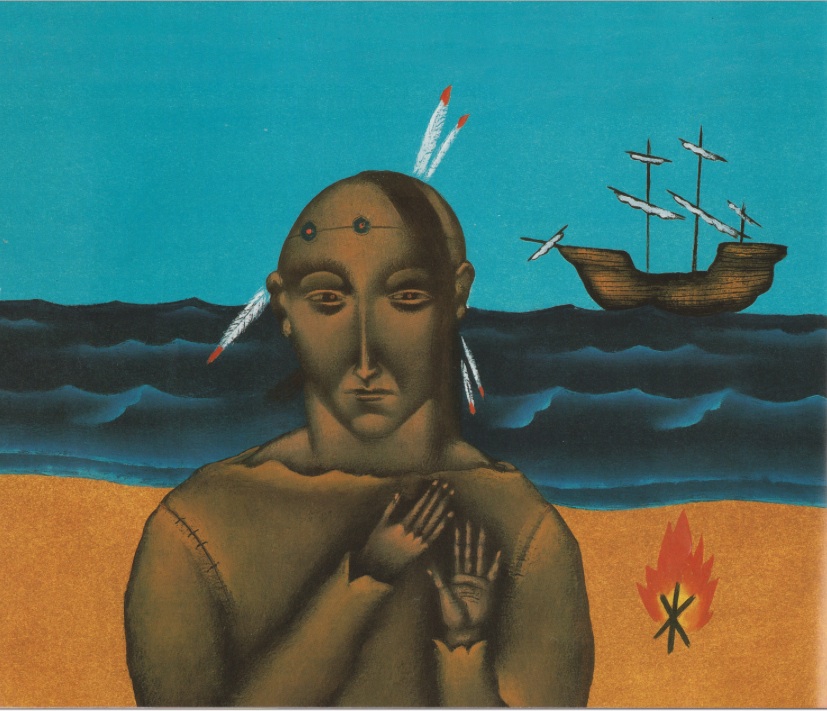
1614 was a critical year for the Wampanoag. This was when Captain Thomas Hunt, an English explorer and trader, seized at least twenty of their countrymen from Patuxet to sell into Spanish slavery. One of those taken was Tisquantum or Squanto. For the next five years, Tisquantum lived a tumultuous life as a slave in Spain, an employee of a wealthy English merchant, Sir John Slaney, and an interpreter for the Newfoundland Colony before being brought back to England once more. He finally returned back to Patuxet in 1619 with Captain Thomas Dermer and would become a cultural broker between the new English colonists at Plymouth and the Wampanoag leader Massasoit.
While the Pilgrim landing at Plymouth is widely known and celebrated, the account of the twenty captured Patuxet is less so. To address this problem, a number of the Wampanoag people have created an exhibit called Captured 1614: The True Story of the Patuxet Wampanoag, which tells the story from the Wampanoag perspective. Produced by the Indian Spiritual and Cultural Training Council and SmokeSygnals Marketing and Communications, the exhibit is part of a larger program to recognize Plymouth’s upcoming 400th anniversary in 2020.
The exhibit opens to the public on Thursday, November 13, 2014 at 4:00 pm at the Plymouth Public Library in Plymouth, Massachusetts and runs through the Spring of 2015. For further information and directions, contact the Plymouth Public Library. (Click here to locate the Library on a map.)
For more about the kidnappings, see Alden T. Vaughan’s Transatlantic Encounters: American Indians in Britain, 1500-1776, David G. Sweet and Gary B. Nash’s Struggle and Survival in Colonial America, and the introduction to David Silverman’s Faith and Boundaries: Colonists, Christianity, and Community among the Wampanoag Indians of Martha’s Vineyard, 1600-1871.
The illustration above is by Michael A. Donato and can be found in Eric Metaxas’s Squanto and the First Thanksgiving. The attached map of Squanto’s travels is from “Enonken (talk) BlankMap-World6.svg: en:User(BlankMap-World6.svg) [Public domain],” via Wikimedia Commons.
Editorial Note: The information in the article was corrected (12/1/2014) to reflect new research indicating that Squanto may not have been among the Abenaki captives taken by George Weymouth in 1605. Our thanks to Paula Peters for bringing this to our attention.
2 comments for “Captured Stories”